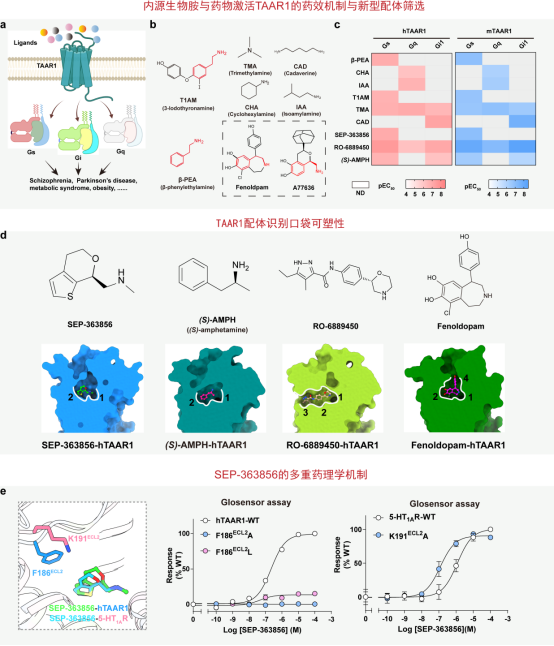On November 7, the team of Prof. Shao
Zhenhua and Associate Prof. Yan Wei from the State Key Laboratory of Biotherapy,
together with the team of Prof. Sun Jinpeng and Prof. Yu Xiao from Shandong
University, published the latest research paper "Ligand recognition and G
protein coupling of trace amine receptor TAAR1" in Nature.

Here is the abstract:
Trace amine-associated receptors (TAARs), a
group of biogenic amine receptors, play pivotal roles in neurological and
metabolic homeostasis1. They recognize diverse endogenous trace amines (ETAs)
and subsequently activate a range of G protein subtype signaling pathways2,3.
Notably, TAAR1 has emerged as a promising therapeutic target for treating
psychiatric disorders4,5. However, the molecular mechanisms underlying its
ability to recognize different ligands remain largely elusive. Here, we present
nine cryo-electron microscopy (EM) structures, with eight showing human and
mouse TAAR1 in complex with an array of ligands, including the endogenous
3-iodothyronamine, two antipsychotic agents, the psychoactive drug amphetamine,
and two identified catecholamine agonists, and one depicting 5-HT1AR in complex
with an antipsychotic agent. These structures reveal a rigid consensus binding
motif in TAAR1 that binds to ETAs stimuli and two extended binding pockets that
accommodate diverse chemotypes. Combined with mutational analysis, functional
assays and molecular dynamic simulations, we elucidate the structural basis of
drug polypharmacology and identify the species-specific differences between
human and mouse TAAR1. Our study provides insights into the mechanism of ligand
recognition and G protein selectivity by TAAR1, which may aid the discovery of
ligands or therapeutic strategies for neurological and metabolic disorders.